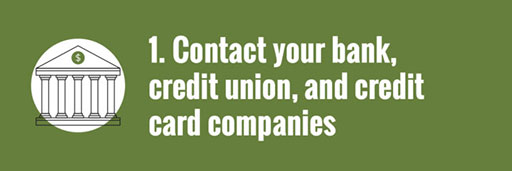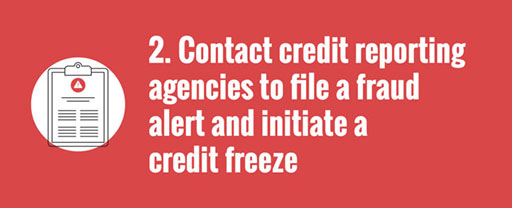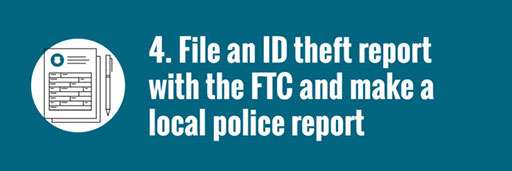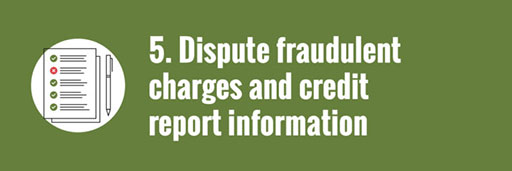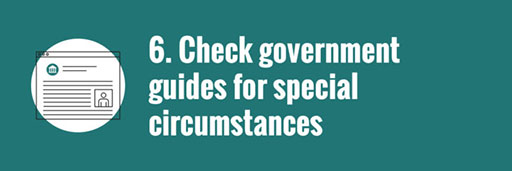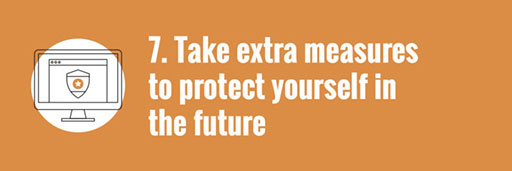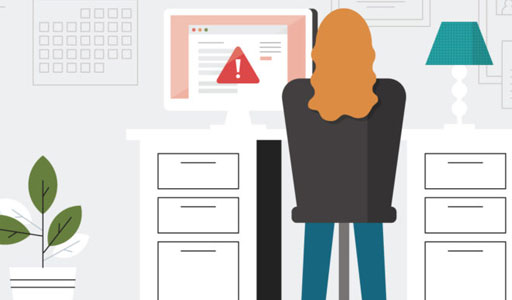
A new report from A Secure Life showcases the states with the highest rate of Identity Theft. According to the report, Florida ranks 4th in the nation for the number of Identity Theft cases. Identity Theft affects not just you, but your entire family.
Knowing what to do if you become a victim can save hours of your life trying to get your identity restored, as well as make the difference in your ability to recover from this dilemma and restore your accounts.
Was your credit card unexpectedly rejected? Or have you spotted unfamiliar charges on your bank statement? These are just a couple signs of potential identity theft.
Once you realize your identity has been compromised, you need to act fast. But don?t panic; this guide will walk you through each step you need to take to be sure you recover as quickly as possible.
Step-by-step guide to recovering your identity:
Take extra measures to protect your finances as soon as you realize your identity has been stolen. While credit card fraud is only one small part of identity theft, it can clear out your savings, rack up charges, and ding your credit score. Someone who?s stolen your identity could access your accounts fairly easily, so we recommend contacting your bank before you start on some of the more time-consuming steps.
ASL The Numbers
File a fraud alert
A fraud alert makes it harder for someone else to apply for credit in your name. If you?ve got a fraud alert on your report, a business has to confirm your identity before issuing new credit.
Fraud alerts are free and last for a year. You need to contact only one credit bureau?after you file a fraud alert with one credit bureau, it must tell the other agencies.
Initiate a credit freeze
When you apply for a new loan or line of credit, a creditor often checks your credit report and history to see whether you qualify and to set an interest rate.
A credit freeze limits access to your report so new creditors can?t access it. This freeze can prevent someone else from taking out a new loan in your name.
Don?t worry?it?s easy to unfreeze your credit if you need a new car loan or credit card; just contact the credit bureaus again and ask them to unfreeze your reports.
To freeze your credit, you need to contact all three credit bureaus separately.
Credit reports
You can get one free report a year from each of the three credit bureaus. If you want more frequent access to updated credit reports, you may want to sign up for a credit monitoring service.
Once you get your credit reports, print out copies and use a highlighter to mark anything suspicious.
Create a new document for each credit bureau and list any information on the report that is the result of identity theft.
Bank and credit card statements
Gather the last 12 to 18 months of bank and credit card statements and look for any fraudulent charges. If you find something, contact your bank as quickly as possible. In some cases, they?ll remove the charges. (Credit cards usually have more protections than debit cards for this kind of issue.)
If you share accounts with someone else, go through your statements together in case one of you made a purchase the other person doesn?t remember.
An official report is no guarantee that an identity thief will be caught, but having FTC and police reports will help you counteract the damage and bolster your claim.
FTC report
Print out a copy of your report to reference in conversations with businesses and credit bureaus. If you register for an account when you file your report, the FTC will also provide personalized guidance to help you recover from identity theft. If you register for an account, you?ll get personalized guidance on what to do next.
Police report
Your local police department may not have the time and resources to hunt down the person who stole your identity. But having an official case number will lend credibility to your cause when you tell a business a charge on your card is fraudulent.
Since the processes of filing a police report vary from one area to the next, you?ll need to do a bit of googling on your own to find the contact information for your local police department.
Unfortunately, this is the tedious part?especially if thieves made a lot of charges in your name. Go through the list of fraudulent charges and accounts that you put together in step 3.
Then contact each affected business and ask them to remove fraudulent charges or close accounts that were opened in your name.
The FTC has gathered contact information for many large companies, so start by checking that list for major places you?ll want to contact.
Company contact list
Send letters to each credit bureau asking them to block information from your report that?s there as a result of identity theft. Use the information you gathered in step three and reference the FTC?s sample letter to get you started. Include the letter, a copy of your report from that bureau with issues highlighted, and a separate document listing out all the issues on the report.
The advice in this guide can help you handle most cases of identity theft, but some situations require specialized solutions.
Most of the advice here will still be relevant, but if you need help handling child identity theft, medical ID fraud, or another unique situation.
When your identity has been stolen, you?ll need to take extra steps to protect your future:
- Update all your accounts with new passwords.
- Pay with credit cards instead of debit cards when possible.
- Start checking your bank and credit card statements every month to watch for suspicious activity.
- Consider setting up an extended fraud alert with each credit bureau. (Experian, Equifax, TransUnion)
- Consider signing up for identity theft protection to get help monitoring your information.
https://www.asecurelife.com/financial-security/what-to-do-if-your-identity-is-stolen/
Source: asecurelife.com

